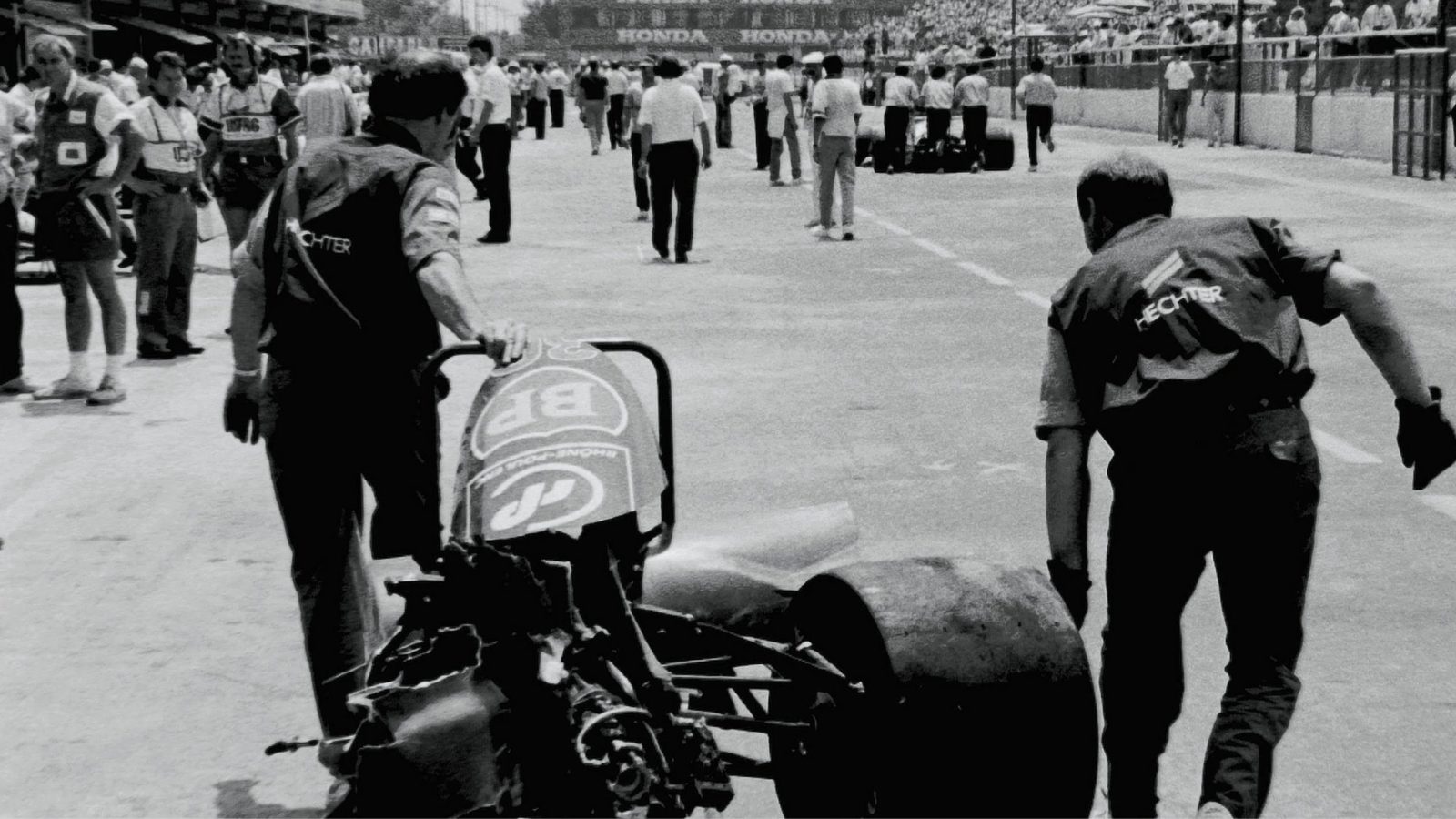Flashback: Larrousse wreckage that reveals Alliot’s lucky escape
For two decades Maurice Hamilton reported from the F1 paddock with pen, notebook and Canon Sure Shot camera. This month we are at the 1988 Mexican GP following a near-disaster in qualifying for Larrousse Calmels’ Philippe Alliot

This is the transmission and right-rear corner – plus nose cone – from Philippe Alliot’s Lola on their way back to the Larrousse Calmels pit after an enormous shunt during qualifying for the 1988 Mexican Grand Prix. The rest of the car – or those bits of it that hadn’t been pulverised against the pitwall – finished its wild journey upside down on the far side of the track. The scene resembled the aftermath of an aircraft accident. Miraculously, the Frenchman had scrambled from beneath the wreck and walked away.
The Lola had suffered a rear wishbone failure while coming off Peraltada, the fearsome banked final corner. After twitching right and then left, the dark blue car had been flicked into a spin by the kerb at the exit of the 180-degree right-hander. The Lola-Ford hit the pitwall backwards at 150mph before barrel-rolling across the track. Even if you had been present in the pitlane and failed to see the accident, you felt and heard it through a combination of the ground shaking and a loud, yet muffled ‘Booom!’
The pitwall was, fortunately for the period, unusually high. It didn’t bear thinking about the consequences had the heavy transmission and right rear wheel been hurled into the pitlane. As it was, the Camel umbrella over the Lotus pitwall crew had been peppered by debris as though riddled with machine gun bullets. Alliot’s somewhat surprising ability to walk steadily across the track was soon arrested by Professor Sidney Watkins, the FIA medical chief suggesting the driver should have an immediate lie down while an initial check was carried out. After further examination in the medical centre, Alliot was declared fit.
So, remarkably, was the Lola LC88, chassis No1. Which was just as well because the Larrousse team did not have a spare car in Mexico thanks to damage inflicted by Alliot on chassis No3 two weeks before in Monaco. Moments before the Mexico crash, Alliot had qualified on the seventh row. Wisely, it was decided to start from the back, the morning warm-up having been confined to one lap because of oil on the clutch plate. Alliot was destined to get no further in the race when the handling immediately felt awry thanks, it was later discovered, to a cracked rear upright.
How, you might ask, had such a fundamental failure gone unnoticed? For the same reason – this was 34 years ago, after all – Alliot had gone to the grid wearing the same crash helmet; the one bearing heavy scuff marks as proof of a miraculous escape.
